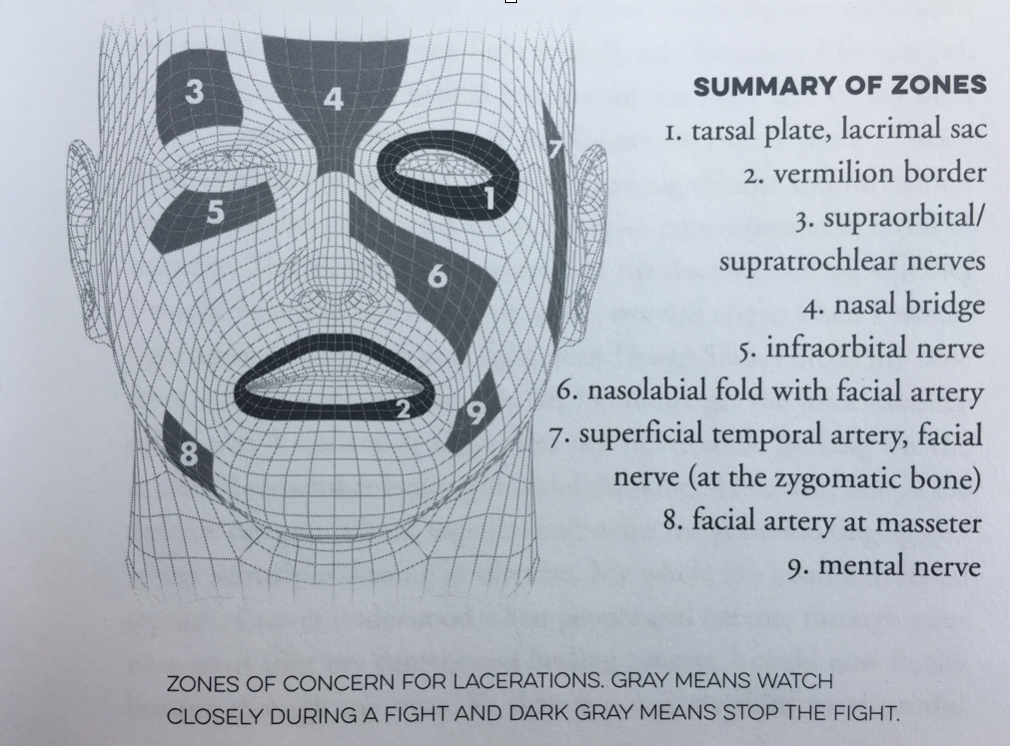
Facial injuries in combat sports
How long should I wait for my facial cut to heal before training again?
Anatomy: Your face houses two eyes, a nose and a mouth. You need to present these things to the world and thus you should take care of it. The skin of the face is relatively thin and is not very resistant to abrasions. Take a punch, elbow or shin to the face and the skin is caught between two bones- your own and those of your opponent.
The soft, gelatinous eyes are protected on all but one side by hard bones. Your eyelid covers the iris and pupil from certain potentially harmful contact, but is very limited in its capacity to due so. The nose is about 1/3 bone and 2/3 soft cartilage and contains very sensitive blood vessels. The nose can be “toughened” in seasoned fighters but is much more prone to bleeding in novice or amateurs combatants. The ears, like the nose, are cartilaginous and excessive rubbing or pressure can lead to cauliflower ear. While not threatening to health in particular, some may consider it not very aesthetically appealing.
Injuries: Special consideration need to be taken when there is arterial bleeding (very difficult to stop, typically spurting blood) or exposure of an underlying nerve. Facial skin that has not been damage before is typically 20% as strong pre-injury at two weeks, 50% by 5 weeks and is about 80% as strong 10 weeks out. Controlling blood loss is imperative for both the fighter and the opponent. Gushing blood from a wound can cause vision impairment. In a fight, the cutman should have the appropriate equipment to control bleeding and swelling, especially around the eye.

Stoppage of a fight may be due to a deep laceration around the orbit or the vermillion border of the lips (see photo). Exposure of underlying nerve can result in permanent damage if not treated immediately and safely. Additionally, post-fight care should include cleaning of debris and foreign particles from the wound to prevent infection. Infection control includes use of sterile bandages, changing of bandages when necessary, maintaining a clean wound and limit training that might reopen laceration.
Prevention: the use of headgear, gloves, elbow and leg padding will dramatically reduce the risk for skin lacerations during training. Having a skilled sparring partner is beneficial as well (novice athletes have less control over their movement and might “over-strike”). Applying small amounts of vaseline during practice can reduce the friction caused by glove contact.